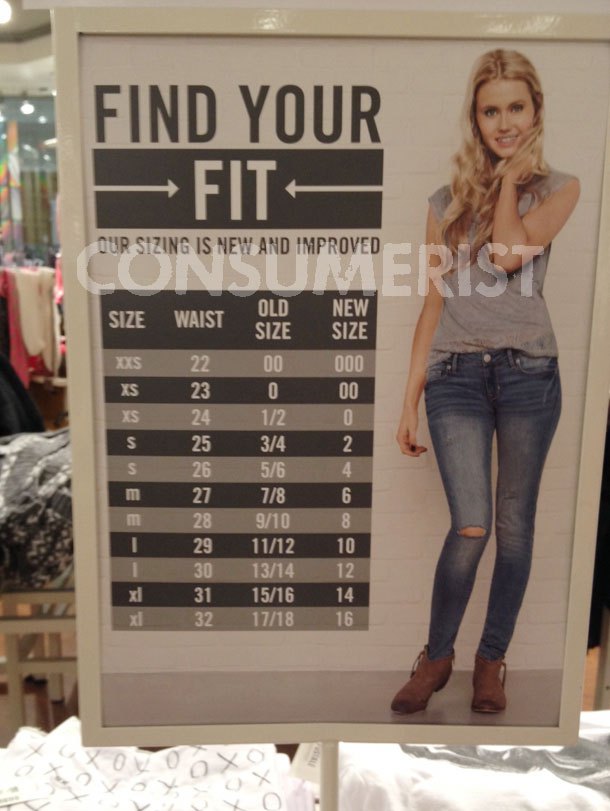Male Reader Shocked To Learn That Vanity Sizing Exists
 Reader Ben was shopping at Aeropostale when he noticed a guide to the chain’s new women’s sizing hanging on the wall. He snapped a picture of it and sent it to us. “I wouldn’t say this is exactly deception, I think Aeropostale has found a rather creative way to try to sell more clothes,” he writes. Whether adjusting sizes is or isn’t deceptive is a matter for fashion industry debate, but what Aeropostale is doing isn’t creative or new.
Reader Ben was shopping at Aeropostale when he noticed a guide to the chain’s new women’s sizing hanging on the wall. He snapped a picture of it and sent it to us. “I wouldn’t say this is exactly deception, I think Aeropostale has found a rather creative way to try to sell more clothes,” he writes. Whether adjusting sizes is or isn’t deceptive is a matter for fashion industry debate, but what Aeropostale is doing isn’t creative or new.
Vanity sizing is the theory that companies intentionally put smaller sizes on larger garments, figuring that a customer who normally wears a size 12 will gather an armful of dresses at your store if she discovers that she wears a size 8 there. There’s scientific evidence that shows this is true: being able to fit in a smaller numerical size than expected boosts our self-esteem.
“IMO, they’re trying to make women feel better about their size, hoping this will encourage them to buy,” Ben observes, causing every person with experience shopping for women’s clothing who is reading this post to fall out of their chairs laughing.
While it’s comforting to think that this is the only reason why the numbers on women’s sizes have crept up over the decades, the truth is more complicated. If Americans’ waistbands weren’t expanding in the aggregate, there would be no need to adjust sizes.
In a controversial article, The myth of vanity sizing, patternmaker Kathleen Fasanella argues that intentional vanity sizing as consumers imagine it doesn’t exist, but instead size numbers are creeping down because people as a whole are getting larger. It’s because different companies scale their products differently according to their markets, and any change in sizes between brands and over time is because of this chaos.
Not that men are immune. Writing for Esquire a few years ago, Abe Sauer discovered that there’s a huge variation between pants that are supposed to be the same size. The same measurement-based size!
Want more consumer news? Visit our parent organization, Consumer Reports, for the latest on scams, recalls, and other consumer issues.

